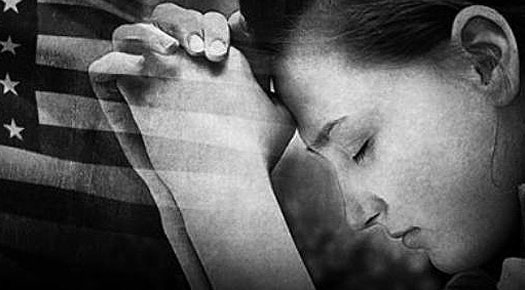
According to a major survey released earlier this month, a record-low percentage of Americans go to church regularly, associate themselves with a certain religion or identify themselves as religious people. The results of the 2014 General Social Survey revealed the continuation of a decades-long hiatus of the pews, along with an increasing percentage of Americans who claim loyalty to absolutely no religion. Despite the issues that Americans seem to have with denominational ties and weekend services, they have not stopped praying on their own.

As many as 57 percent of Americans said they continue to pray at least once every day, which is only a slight difference from 54 percent respondents who said the same in 1983, when the survey first asked this particular question. Fully 75 percent of respondents said they pray at least once each week while 25 percent of respondents said they do not pray as often or ever.
This national survey is the largest study concerning religious attitudes in the United States, being conducted at least once every two years since 1972 by NORC at the University of Chicago.
The stability of prayer contrasts sharply with the corrosion of other measures related to religious commitment. Since 2006, the number of people identifying as very or moderately religious has gone down by eight percentage points, from 62 percent to 54 percent. The number of people associating themselves with any particular religion has also fallen from more than 90 percent in the 1980s and 90s to 79 percent in 2014, with only approximately 4 in 10 people saying they attend church services at least once every month, which is a drop of roughly 10 points from 30 years ago. All of these figures are record-lows.
Christian Smith, professor of sociology and head of University of Notre Dame’s Center for the Study of Religion and Society, said this flexibility to pray shows a wider shift in Americans’ understanding of religion.
“Religion is gradually becoming more personal, private, subjective in practice,” and “less public, institutional and shared,” Smith said. “People still believe religious things and practice religion ‘in their heads,’ as in prayer, but are less institutionally connected and engage in fewer public, institution-centered observations.”
James Martin, a Jesuit priest and author of “Jesus: A Pilgrimage”, believes this durability of prayer reflects a very basic need among Americans.
“It’s intensely human. Even if you don’t like your local parish, you can’t get away from that human instinct to pray,” he said.
Many people who have stopped associating themselves with a particular religion or attending church services, still continue to pray regularly. Approximately, one in four Americans, who have no religious preference, report praying at least once every day, just like those three in ten Americans who report never having attended church services. Obviously, those who attend church services regularly pray a lot more frequently. As many as nine in ten Americans who attend services on a weekly basis, pray once daily. This reduces to 54 percent for those who attend services occasionally.
While millennials have shifted the trend of religious affiliations, their low levels of prayer are still quite similar to their parents. According to the survey, people start praying a lot more as they age and after three decades, daily prayer has increased by up to 62 percent among members of that generation.
However, with their looser ties to religious groups, it is unclear if millennials will continue to follow the same path. The number of young adults who associate with a certain faith is currently 19 percentage points lower than that of young adults 30 years ago.
“At some point, it becomes problematic,’’ Martin said. “If it’s just me and God, anything I do can be seen as divinely ordained. When you exempt yourself from the community, you’re also exempting yourself from the community’s wisdom.”
The National Science Foundation funded the General Social Survey, which was conducted through in-person interviews with a randomly chosen national sample of 2,538 adults from March 31 to October 13 last year. The results carry a 2.5 percentage margin of sampling error. The data was analyzed by The Washington Post.
Photo Credits: Charisma News
